Computer History
Revising the revisionist history
This is intended to be a reference work for those with an interest in a true as possible, history of the computer. It will be updated as information becomes available.

I’m occasionally told that were it not for science, I would not be sitting at my computer typing these words and the other content of this blog. They surely mean universal science and not academic science – we need to separate the two to make any sense of the history? We are all able to partake in universal science, it’s what many of the names below, who did in fact give us the computer were doing. Science takes on a wishful ignorance when confronted with such things and tends to seek out information that conforms to pre-existing viewpoints. Many things attributed to modern science have a history that goes back far beyond the time when the word science was first used and modern science is a babe-in-arms compared to the history of computing. Academic scientists who have made major contributions to computing are very few and far between. This is confirmed when they are compelled to invent computer heroes as discussed in parts 1 and 2. But, because we are taught by academics, it is second nature to assume that the subjects we are taught are the brainchildren of academics. This idea, although almost universally untrue, is encouraged by those same academic teachers who themselves often mistakenly believe it. And so, this is what this blog is all about – is the computer the work of academic scientists or not? Judge for yourself!
Control by Program
The ancient history of automata with programmed control goes way back more than two thousand years. What needs to be emphasised is that they were ‘programmable’ and its the program that makes the difference, it’s what makes computers what they are today. The transition from mechanical to electronic programming is an inevitable step and dependent on the availability of technology; its the original idea that is priceless. 1
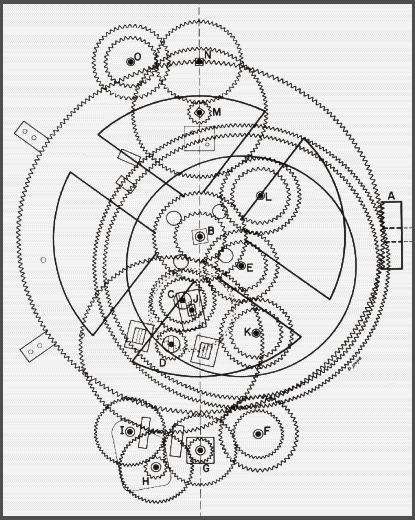
Wiki: The Antikythera mechanism made about 87 BC is an ancient analog computer designed to predict astronomical positions and eclipses for calendrical and astrological purposes, as well as the Olympiads, the cycles of the ancient Olympic Games.
The truth is that no one knows how old it is or its use, but I would guess it probably was some kind of astrological computer.
Sequence Control
mlahanas.de: “Heron of Alexandria (c. 10 – 70 AD) described a mechanism or apparatus that made use of the so called “sequence control mechanism”. This mechanism used drums in which pins and gears were mounted to control events that ‘laid ahead’, very like early computers. Sequence control gives a means to foretell the outcome of a sequence of events in advance, without influencing the outcome directly. Examples of sequence control are a music box with a drum on which pins are attached that strike against the teeth of a comb; teeth that have predefined lengths and thus possess their own tone. By striking teeth in a predefined sequence a melody will sound. Sequence control is defined as a lower generation of computer programs. The operator feeds machines like that with certain limited input and lets the machine run on its own without external control for the outcome: actions to move mechanical contraptions, music or calculations.” 2
operator feeds machines like that with certain limited input and lets the machine run on its own without external control for the outcome: actions to move mechanical contraptions, music or calculations.” 2
9th Century
Wiki: “The Banu Musa brothers also invented an automatic flute player which appears to have been the first programmable machine.” 3
“Most notable among their achievements is their work in the field of automation, which they utilized in toys and other entertaining creations. They have shown important advances over those of their Greek predecessors.
The Book of Ingenious Devices describes 100 inventions; the ones which have been reconstructed work as designed. While designed primarily for amusement purposes, they employ innovative engineering technologies such as one-way and two-way valves able to open and close by themselves, mechanical memories, devices to respond to feedback, and delays. Most of these devices were operated by water pressure.
Qaras?un, a treatise on weight balance.
‘A Book on the Description of the Instrument Which Sounds by Itself’, about musical theory.” 4
‘On Mechanical Devices’, a work on pneumatic devices, written by Ahmad.
aliak.com: “In 1206, Al-Jazari invented a programmable musical automaton featuring humanoid musicians and drummers which could be made to play different rhythms and drum patterns if the pegs were moved around. According to Charles B. Fowler, the automata were a robot band which performed “more than fifty facial and body actions during each musical selection.” 5

Boolean algebra
Wiki: “Boolean algebra has been fundamental in the development of digital electronics, and is provided for in all modern programming languages.”
We owe a debt of computer gratitude to George Boole, (1815 – 1864) School Teacher (not a scientist) and ‘The Father of Computer Science’.
gap-system.org: “In 1834 he opened his own school in Lincoln although he was only 19 years old. In 1838 Robert Hall, who had run Hall’s Academy in Waddington, died and Boole was invited to take over the school which he did. His parents, brothers and sister moved to Waddington and together they ran the school which had both boarding and day pupils.
Boole was unable to take Duncan Gregory’s advice and study courses at Cambridge as he required the income from his school to look after his parents. Many honours were given to Boole as the genius in his work was recognised. He received honorary degrees from the universities of Dublin and Oxford and was elected a Fellow of the Royal Society (1857). However his career, which was started rather late, came to an unfortunately early end when he died at the age of 49.” 6
georgeboole.net: “In 1837, something happened on Doncaster town fields that was to have a profound effect on the whole of the 20th century. A young teacher from Lincoln called George Boole was taking a walk when he had a moment of inspiration. He was suddenly inspired to devise and develop a system of algebraic logic that would systematically define and model the function of the human brain. Over the next few decades, Boole refined this idea and eventually published his work in a book ‘The Laws of Thought’. What he had invented has become known as Boolean Logic, and it is the basis of all computer and microprocessor systems in the world today. Without George Boole, who knows where digital technology might be in the 21st century.” 7
Wiki again: “The personal character of Boole inspired all his friends with the deepest esteem. He was marked by true modesty, and his life was given to the single-minded pursuit of truth. Though he received a medal from the Royal Society for his memoir of 1844, and the honorary degree of LL.D. from the University of Dublin, he neither sought nor received the ordinary rewards to which his discoveries would entitle him.” 8
What this is saying basically, is that he was not a scientist in the way that the word is generally understood today.
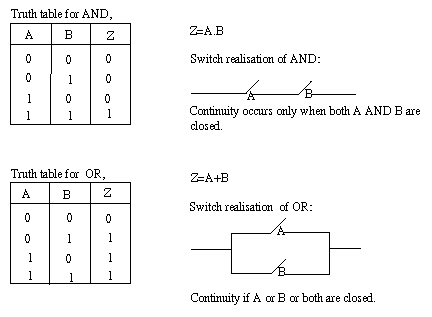
Time-line for George Boole
1849 Boole was appointed to the chair of mathematics at Queens College, Cork (With no academic qualifications).
1849 Boole was to become the first Professor of Mathematics at Queen’s College, Cork,
1851 Boole was elected as Dean of Science, a role he carried out conscientiously.
1851 he published his mathematical work: “I am now about to set seriously to work upon preparing for the press an account of my theory of Logic and Probabilities which in its present state I look upon as the most valuable if not the only valuable contribution that I have made or am likely to make to science and the thing by which I would desire if at all to be remembered hereafter … ”
1854 he published ‘An investigation into the Laws of Thought’, on which are founded the ‘Mathematical Theories of Logic and Probabilities’.
1857 He received honorary degrees from the universities of Dublin and Oxford and was elected a Fellow of the Royal Society… However his career, which was started rather late, came to an unfortunately early end when he died at the age of 49.
1864 8 Dec he died having spent around 18 years as a teacher and 15 years in academia. 9
Not exactly your typical academic career?
Charles Babbage’s Difference and Analytical Engines
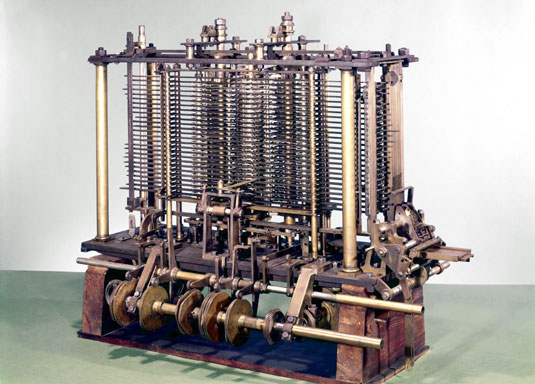
Wiki: “Charles Babbage, FRS (26 December 1791 18 October 1871) was an English mathematician, philosopher, inventor, and mechanical engineer who originated the concept of a programmable computer. He received an honorary degree without examination in 1814.” 10 Babbage seems never to have built a completed version of his Analytical Engine and the one above is a construction based upon his original ideas.
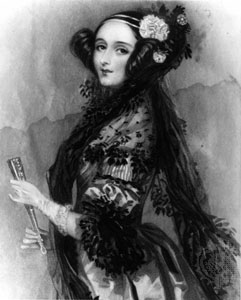
Augusta Ada King, Countess of Lovelace and Babbage’s programmer, in fact the first programmer. well.com: “Despite (her mother) Lady Byron’s (mind) programming, Ada did not sublimate her poetical inclinations. She hoped to be “an analyst and a metaphysician”. In her 30’s she wrote her mother, if you can’t give me poetry, can’t you give me “poetical science?” Her understanding of mathematics was laced with imagination, and described in metaphors.
At the age of 17 Ada was introduced to Mary Somerville, a remarkable woman who translated LaPlace’s works into English, and whose texts were used at Cambridge. Though Mrs. Somerville encouraged Ada in her mathematical studies, she also attempted to put mathematics and technology into an appropriate human context. It was at a dinner party at Mrs. Somerville’s that Ada heard in November, 1834, Babbage’s ideas for a new calculating engine, the Analytical Engine. He conjectured: what if a calculating engine could not only foresee but could act on that foresight. Ada was touched by the “universality of his ideas”. Hardly anyone else was.” 12 He was thinking of artificial intelligence, something still outside of the understanding of science and today, generally and completely misunderstood.
The thoughts and ideas of Babbage and Lovelace can be discerned in the writing of Alan Turing. Mechanical artificial intelligence was a typically 18-19th century science.

It must not be forgotten that women of the day were considered to be intellectually inferior and any contemporary history will be slanted by this prejudice. 15 What we see in her is imagination used to further knowledge, something taboo even in today’s science. Science expects knowledge to emerge from past knowledge and calls it induction, like using a dictionary to find a new word; unfortunately all that transpires is past knowledge.

J. H. Muller’s Difference Engine, 1786 – before Babbage was born
Wiki: “J. H. Muller, an engineer in the Hessian army conceived the idea of a difference engine decades before Babbage in a book published in 1786, but failed to find funding to progress this further. Muller conceived the idea that would later evolve into modern computers. 17 His machine was ready on 20th June 1784.” It seems that a number of non-scientists were involved in the development of the Difference Engine.
Logic gates and flip-flops in 1886
…are switches that can remember on and off, and are used to represent 0 and 1, the binary basis of all electronic computers.
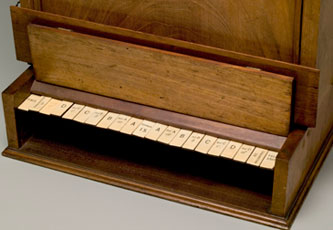
Wiki: “In an 1886 letter, Charles Sanders Peirce (scientist) described how logical operations could be carried out by electrical switching circuits.” The letter was based on ideas from William Stanley Jevons ‘logical piano’. Jevons was a pioneer of symbolic logic, and his paper includes a detailed explanation of his system of equational logic, which again derived from the symbolic logic devised by Boole over two decades earlier.
http://www.historyofinformation.com/expanded.php?id=591
http://www.historyofinformation.com/expanded.php?id=4090
Starting in 1898, Nikola Tesla filed for patents of (practical) devices containing logic gate circuits…” 18 wordiq.com: Nikola Tesla’s “1903 patents 723,188 and 725,605 contain the basic principles of the logical AND circuit element basic to all computers.” 19-20 US Patent 613,809 “Method Of And Apparatus For Controlling Mechanism Of Moving Vessels Or Vehicles”. He used them for the first examples of remote radio control.

wordiq.com: “Walther Bothe, inventor of the coincidence circuit, got part of the 1954 Nobel prize in physics, for the first electronic AND gate in 1924.” 21 And again at oscience.info: “The first electronic AND gate is invented by Walther Bothe, inventor of the coincidence circuit.” 22 Already patented by Nikola Tesla. It would be interesting to compile a list of such Nobel prizes?
The Coincidence Circuit: The AND Gate is a switch that switches on or off in response to a signal from elsewhere, like a relay. The Bothe Coincidence Circuit consisted of two (or more) AND Gates responding to Geiger Müller tubes. The idea is, that both switches need to closed at the same time in order to complete the circuit and thereby activate a counter or other device. In the experiment below, (not shown) one GM tube may be unshielded and the other shielded by lead and iron. If the counter is activated, it is known that the radiation has passed through the shielding with the same ease as that in the unshielded environment.

But Bothe unlike Tesla before him did not use an electronic circuit: Wiki: “The Bothe-Kohlhörster experiment demonstrated the presence of penetrating charged particles in cosmic rays. They used the same mechanical-photographic method for recording simultaneous discharges which, in this experiment, signalled the passage of a charged cosmic ray particle through both counters and through the thick wall of lead and iron with which they had surrounded the counters. Their paper, entitled “Das Wesen der Höhenstrahlung”, was published in the Zeitschrift für Physik v.56, p.751 (1929).” 23
mpg.de: “Together with Max Born, Bothe received the Nobel Prize for the development of the coincidence method, which fundamentally improved the measuring and thus the study of radiation phenomena.” 24
But Nikola Tesla had also already patented his, “Apparatus for the Utilization of Radiant Energy”, US-Patent 685,957, in November 05,1901.
The AND gate can be seen in several of his patents. 25 nuenergy.org: Brooklyn Eagle July 10, 1932 Tesla states: “More than 25 years ago I began my efforts to harness the cosmic rays and I can now state that I have succeeded in operating a motive device by means of them. I will tell you in the most general way, the cosmic ray ionizes the air, setting free many charges ions and electrons.” 26 It seems he had succeeded in converting comic rays into usable energy and one would suppose this to be more important than the coincidence method and more deserving of a Nobel prize? Although this has nothing to do with computers it does illustrate how scientists award themselves credit for the work of others. It seems that both Nikola Tesla and Nobel laureate JJ Thomson were doing these same experiments as may be seen here on Youtube:
We will return to this subject in the blog on energy and others.
Bruno Rossi, 1930
Wiki: “Bruno Rossi, at the age of 24, was in his first job as assistant in the Physics Institute of the University of Florence when he read the Bothe-Kohlhörster paper. It inspired him to begin his own research on cosmic rays. He fabricated Geiger tubes according to the published recipe, and he invented the first practical electronic coincident circuit. It employed several triode vacuum tubes, and was capable of registering coincident pulses from any number of counters with a tenfold improvement in time resolution over the mechanical method of Bothe. Rossi described his invention in a paper entitled “Method of Registering Multiple Simultaneous Impulses of Several Geiger Counters”, published in Nature v.125, p.636 (1930). The Rossi coincidence circuit was rapidly adopted by experimenters around the world. It was the first practical AND circuit, precursor of the AND logic circuits of electronic computers.” 27 Well no it was not.
Wiki editors think he invented it: “Among his (Rossi’s) contributions to the electronic techniques of experimental physics are the inventions of the coincidence circuit (Florence 1930), the time-to-amplitude converter (Cornell 1942) and the fast ionization chamber (Los Alamos, with H. Staub 1943).” 28
Wiki: “William Henry Eccles FRS (1875–1966) was a British physicist and a pioneer in the development of radio communication…in 1898, he became an assistant to Guglielmo Marconi, the Italian radio entrepreneur.” 29
See the blog on wireless where the reliability of Marconi is questioned with regard to Tesla’s and other patents.
mpoweruk.com: William Henry Eccles and F.W. Jordan “1919 The flip-flop or bi-stable latch circuit a basic building block in all digital computers and logic circuits was invented by British engineers William Henry Eccles and F.W. Jordan working at the government’s National Physical Laboratory.
(More inventors) 30
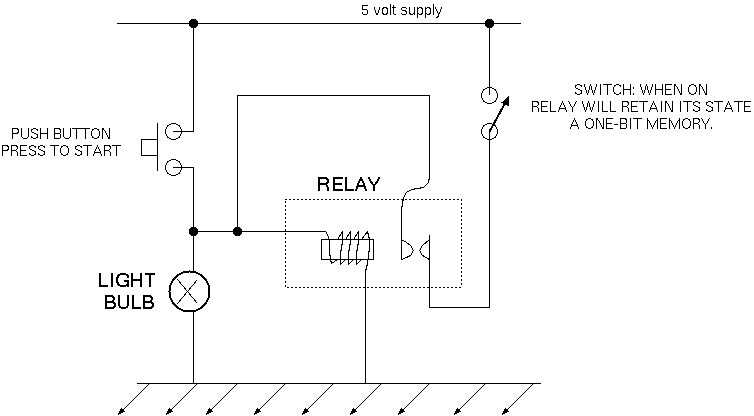
mpoweruk.com: Originally implemented with triodes, now with transistors it can remember two possible conditions or states and thus is able to store a single bit of information or a binary digit, thus enabling computers to count. This was the circuit chosen in 1958 by Robert Noyce (See below) for the first planar Integrated Circuit.
Eccles and Jordan were not Americans as reported on many US based web sites. Another Internet myth! Eccles did pioneering work on radio propagation and was a Fellow of the Royal Society (FRS). He rose to be President of the Physical Society from 1928 to 1930, and President of the Institute of Electrical Engineers (IEE) in 1926. Jordan faded into obscurity.” 31
Frank Wilfred Jordan again. The Wiki article is somewhat confusing as it begins by describing Jordan as a lecturer in physics, he then becomes an electrician: Wiki: “In 1912 he was a “lecturer in physics”, presumably at the Royal College of Science.” But at the later time of the ‘invention’ of the flip-flop (1918) he is demoted: “In 1918 he was an “electrician” at City and Guilds Technical College. There is little else known about him. This flip-flop circuit became the most important circuit in computer technology for it can be given a large number of different actions.” 32
And so we see that “the most important circuit in computing” was said to be invented by someone about whom nothing is known, having already been invented sometime before 1886 and patented in 1898? But all that matters is that some seemingly scientific names are presented.
Wiki: “Following World War I Eccles’ main interest was in electronic circuit development. In 1918 he worked in collaboration with F. W. Jordan to patent the flip-flop circuit, which became the basis of electronic memory in computers.” 33
1941 “Konrad Zuse, inventors.about.com: (1910–1995) Zuse was a German civil engineer and computer pioneer (not a scientists). His greatest achievement was the world’s first functional program-controlled Turing-complete computer, the Z3, which became operational in May 1941.” (Alan Turing’s name is associated with a computer which he had no idea existed at a time when Turing knew nothing about electronic computers because Colossus, the source of his information, also did not exist !)
“Konrad Zuse (1910-1995) was a construction engineer for the Henschel Aircraft Company in Berlin, Germany at the beginning of WWII. 34
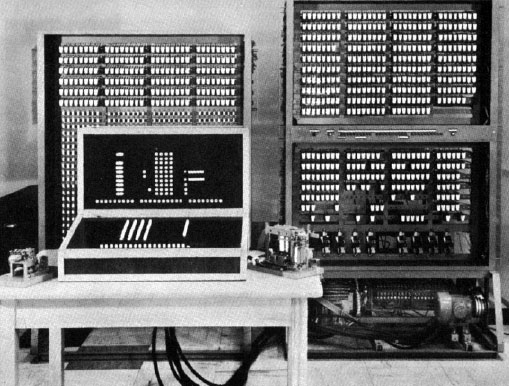
According to “The Life and Work of Konrad Zuse” (by Horst Zuse)
In 1941, the Z3 contained almost all of the features of a modern computer as defined by John von Neumann and his colleagues in 1946. (The circular reasoning that makes the inventor somehow inferior to the theorist who builds upon the inventors ideas!) The only exception was the ability to store the program in the memory together with the data. Konrad Zuse did not implement this feature in the Z3, because his 64-word memory was too small to support this mode of operation. Due to the fact that he wanted to calculate thousands of instructions in a meaningful order, he only used the memory to store values or numbers.
The block structure of the Z3 is very similar to a modern computer. The Z3 consisted of separate units, such as a punch tape reader, control unit, floating-point arithmetic unit, and input/output devices.”
“Konrad Zuse wrote the first algorithmic programming language called ‘Plankalkül’ in 1946, which he used to program his computers. He wrote the world’s first chess-playing program using Plankalkül.” 35 The Zuse computer was electromechanical – relays, not electronic.
Tommy Flowers
bbc.co.uk: “Flowers’s first contact with the wartime codebreaking effort came when he was asked for help by Alan Turing, who was then working at the government’s Bletchley Park codebreaking establishment 50 miles north of London. Turing wanted Flowers to build a decoder for the relay-based Bombe machine, which Turing had developed to help decrypt the Germans’ Enigma codes. Although the decoder project was abandoned, Turing was impressed with Flowers’s work, and introduced him to Max Newman who was leading the effort to break a teletype-based cipher, called “Geheimschreiber” (secret writer) by the Germans and “Fish” by the British decoding team. This was a much more complex coding system than Enigma; the decoding procedure involved trying so many possibilities that it was impractical to do by hand. In February 1943, Flowers proposed an electronic system, which he called Colossus, using over 1800 valves (vacuum tubes). Because the most complicated previous electronic device had used about 150 valves, some were sceptical that such a device would be reliable. Flowers countered that the British telephone system used thousands of valves and was reliable because the electronics were operated in a stable environment that included having the circuitry on all the time. The Bletchley Park management were not convinced, however, and merely encouraged Flowers to proceed on his own. He did so, providing much of the funds for the project himself.” (He was a post office engineer and not a scientist) http://en.wikipedia.org/wiki/Tommy_Flowers
The “project” was the first practical programmable electronic computer. The credit for this is often given to Turing, but although his contribution to the war effort code breaking was invaluable, it was Post Office engineer Tommy Flowers who built the first computer with his own funding. His brainchild Colossus was classified after WWII and his name was not mentioned until 1974 for this reason.
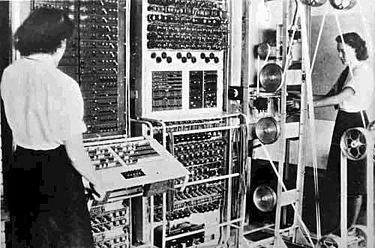
“Colossus was a secret until 1974 and the program’s algorithms are still secret.” It would be interesting to know why and part of the answer can probably be found in part 1 of ‘Science Stole the Computer’ ? “It was not until 1970 that existence of the Colossus was revealed publicly as the result of the USA’s Freedom of Information Act. (The US government NSA had more than likely been given details of Colossus during the war as part payment for US assistance to the UK’s war effort.)” 36
“Colossus undoubtedly made a contribution to the development of computers in Britain by showing Turing, Newman, and others what electronics could do and that knowledge turned their minds to computers immediately after the war.” The Design of Colossus THOMAS H. FLOWERS 37
Some sources mistakenly attribute the design and building of Colossus to Turing and there is no mention of Flowers. This seems to arise from an inability to conceive of the possibility that the first electronic computer was the work of a non-scientist, a denial. This is emphasised with the names of Alan Turing and John von Neumann cropping-up continuously in written works on computers, even though their contribution to actual hardware is minimal compared to the other names on this page. 38
Wiki is forced to admit: “A frequent misconception is that Turing was a key figure in the design of Colossus.” 39 Flowers was insistent that scientists played no part in the British version, and I suppose he should know?
He even mentions parallel processing. 40
The Design of Colossus
Thomas H. Flowers
The academics are not the ones to pass up the opportunity to invite one so esteemed into their ranks and so…
”Tommy received an honorary doctorate from Newcastle University in 1977, and another from Dc Montfort University in Leicester. His life’s work was also acknowledged by the award of the Post Office’s first Martlesham Medal in 1980…
“One anecdote I feel I must recount here is that when someone remarked to Tommy about Alan Turing’s “great contribution” to Colossus, Tommy replied: “Alan Turing had nothing to do with it!”” 41
See also: http://www.ivorcatt.com/47c.htm
So now he can be called Dr. Flowers which makes him appear to have been an academic scientist. Hi ho!
von Neumann and Alan Turing
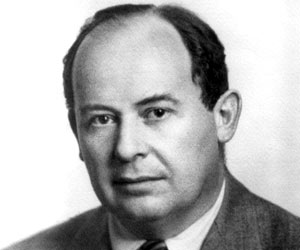
turing.org: “The Internally Stored Modifiable Program.
The breakthrough came through two sources in 1945: Alan Turing, on the basis of his own logical theory, and his knowledge of the Colossus. The EDVAC report, by John von Neumann, but gathering a great deal from ENIAC engineers Eckert and Mauchly. They both saw that the programs should be stored in just the same way as data. Simple, in retrospect, but not at all obvious at the time.” 42
I would dearly love to add some small justification for the above, but it simply does not exist. Turing’s knowledge of Colossus can only have come from the Post Office engineers Tommy Flowers et al because Turing was not present when it was designed and built. It is admitted in the text above that von Neumann acquired his information from ENIAC engineers Eckert and Mauchly. What exactly was the contribution of von Neumann and Turing, apart from theorising on that which was already up-and-running?
Wiki tells us that: “Eckert believed that the widely-adopted term “von Neumann architecture” should properly be known as the “Eckert Architecture,” since the stored-program concept central to the von Neumann architecture had already been developed at the Moore School by the time von Neumann arrived on the scene in 1944-1945.[5] Eckert’s contention that von Neumann improperly took credit for devising the stored program computer architecture was supported by Jean Bartik, one of the original ENIAC programmers.”
https://en.wikipedia.org/wiki/J._Presper_Eckert
See also:
https://en.wikipedia.org/wiki/Von_Neumann_architecture#Development_of_the_stored-program_concept
It tells how von Neumann took full advantage of the so called mistake of attaching his name alone to the original paper on the EDVAC. This is unusual for Wiki as the editors usually support scientists and scientific revisionists, but not unknown in academe. See the blog on the transistor
There are various claims to the first electronic computer:
The Atanasoff-Berry Computer
American sources have often cited the Atanasoff-Berry computer as the first computer: Wiki: “The AtanasoffBerry Computer (ABC) was the first electronic digital computing device. Conceived in 1937, the machine was not programmable (and therefore does not meet the criterion required by Turing), being designed only to solve systems of linear equations. It was successfully tested in 1942. However, its intermediate result storage mechanism, a paper card writer/reader, was unreliable, and when inventor John Vincent Atanasoff left Iowa State College for World War II assignments, work on the machine was discontinued.” 43
Integrated Circuits, (IC’s), Chips, Microchips and Printed Circuit Boards (PCB’s) – Motherboards
Printed Circuit Boards (PCB’s)
electroline.com.au: “In 1903, Albert Parker Hanson, a German citizen living in London, submitted a British patent application for flexible printed wiring circuits intended for use in telephone exchange interconnections.
Based on flat parallel copper conducting strips bonded to paraffin waxed paper, the design used a double layer construction. The copper strips were to be arranged in alternate layers forming a rectangular grid. Interconnections were crimped through holes in the paper. Hanson’s patent application also described double-sided and multilayer boards.
“Hanson may have originally developed this design in 1898 and had certainly submitted a German patent application in 1902 that was not published until 1905. The British Patent Office placed the Hanson patent application in the public domain in 1903 and granted it in 1904.” 45
mpoweruk.com: “1918 Max Schoop produced high current printed circuit boards with heavy tracks for high power vacuum tube circuits using metal deposition by flame spraying through a mask. While successful, like Arthur Berry’s ideas before him, they were not taken up by others.” 46
1936 Paul Eisler
Wiki: “The inventor of the printed circuit was the Austrian engineer Paul Eisler who, while working in England, made one circa 1936 as part of a radio set. Around 1943 the USA began to use the technology on a large scale to make rugged radios for use in World War II. After the war, in 1948, the USA released the invention for commercial use.” 47 We have two inventors!
Integrated Circuit – IC, Microchip, CPU
Jack Kilby “Jack St. Clair Kilby (November 8, 1923 – June 20, 2005) was an American electrical engineer who took part (along with Robert Noyce) in the realization of the first integrated circuit while working at Texas Instruments (TI) in 1958. He was awarded the Nobel Prize in physics in 2000.” 48
Central Processing Unit, CPU
“A central processing unit (CPU), also referred to as a central processor unit, is the hardware within a computer system which carries out the instructions of a computer program by performing the basic arithmetical, logical, and input/output operations of the system. The term has been in use in the computer industry at least since the early 1960s. The form, design, and implementation of CPUs have changed over the course of their history, but their fundamental operation remains much the same.” 49
It was the integrated circuit that led to the processor (CPU) and it’s difficult to decide when the one became the other. Most sites credit Jack Kilby with the invention of the IC, for which he won a Nobel Prize in 2000, but history says otherwise. It seems that Kilby was not the only claimant at this time and that the original idea was much earlier:
1949 Werner Jacobi
Wiki: “Early developments of the integrated circuit go back to 1949, when the German engineer Werner Jacobi of Siemens AG filed a patent for an integrated-circuit-like semiconductor amplifying device showing five transistors on a common substrate arranged in a 2-stage amplifier arrangement. Jacobi discloses small and cheap hearing aids as typical industrial applications of his patent. A commercial use of his patent has not been reported. 50
WikiTalk: “Furthermore, there is a German patent number 833366 which was granted to a Mr. Werner Jacobi on May 15th, 1952, describing the idea of manufacturing several amplifier stages on a single semiconductor by means of applying multiple electrodes to the surface of the semiconductor. It is a rather cursory patent, but nevertheless contains the basic idea of an integrated circuit, at about the same time when Dummer described the idea. Maybe it would be appropriate to include this in the list of inventors. –Stefan Heinzmann” 51

1952 Geoffrey W.A. Dummer Wiki: “The idea of the integrated circuit was conceived by a radar scientist working for the Royal Radar Establishment of the British Ministry of Defence, Geoffrey W.A. Dummer (1909-2002), who published it at the Symposium on Progress in Quality Electronic Components in Washington, D.C. on May 7, 1952. He gave many symposia publicly to propagate his ideas. Dummer unsuccessfully attempted to build such a circuit in 1956.
A precursor idea to the IC was to create small ceramic squares (wafers), each one containing a single miniaturized component. Components could then be integrated and wired into a bidimensional or tridimensional compact grid. This idea, which looked very promising in 1957, was proposed to the US Army by Jack Kilby, and led to the short-lived Micromodule Program (similar to 1951’s Project Tinkertoy). However, as the project was gaining momentum, Kilby came up with a new, revolutionary design: the IC.” 52
Geoffrey Dummer Jack Kilby and Robert Noyce
Wiki again and his time Dummer is an engineer: “Geoffrey William Arnold Dummer, (1909-2002) MBE (1945), C.Eng., IEE Premium Award, FIEEE, MIEE, USA Medal of Freedom with Bronze Palm was a British electronics engineer and consultant who is credited as being the first person to conceptualise the integrated circuit, commonly called the microchip, in the late-1940s and early 1950s… …In 1952 he presented his work at a conference in Washington, DC, (Dum and Dummer!) some six years before Jack Kilby of Texas Instruments was awarded a patent for essentially the same idea. As a result he has been called “The Prophet of the Integrated Circuit”…
…In May 1952 Geoffrey Dummer read a paper at the US Electronic Components Symposium. At the end of the paper he made the statement:
“With the advent of the transistor and the work on semi-conductors generally, it now seems possible to envisage electronic equipment in a solid block with no connecting wires. The block may consist of layers of insulating, conducting, rectifying and amplifying materials, the electronic functions being connected directly by cutting out areas of the various layers.” 53
inventors.about.com: “In 1959 both parties applied for patents. Jack Kilby and Texas Instruments received U.S. patent #3,138,743 for miniaturized electronic circuits. Robert Noyce and the Fairchild Semiconductor Corporation received U.S. patent #2,981,877 for a silicon based integrated circuit.” 54 Both Jack Kilby and Robert Noyce had access to the relevant information before their “invention” and their success was in the field of development. The Prophet was the (re)inventor. Did the Prophet know about the 1949 work of German engineer Werner Jacobi? Additionally, Dummer it seems was not a “radar scientist”.
Wiki: “Robert John (Bob) Widlar (pronounced wide-lar); born on November 30, 1937 in Cleveland; died February 27, 1991 in Puerto Vallarta, Mexico) was an American electronic engineer and a (development and marketing) pioneer of linear (analog) integrated circuit (IC) design.” 55
RAM Random Access Memory and DRAM Dynamic Random Access Memory
The Williams Tube Cathode Ray Tube Memory
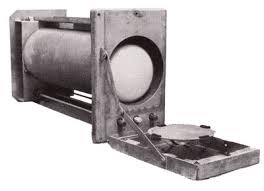
Developed 1946 to 1947 the Williams tube, or the Williams–Kilburn tube after engineers/inventors Freddie Williams and Tom Kilburn is sometimes said to be the first random-access digital storage device?
Wiki: The Williams tube depends on an effect called secondary emission. When a dot is drawn on a cathode ray tube by a beam of fast-moving electrons, the area of the dot becomes slightly positively charged and the area immediately around it becomes slightly negatively charged, creating a charge well. The charge well remains on the surface of the tube for a fraction of a second, allowing the device to act as a computer memory. The lifetime of the charge well depends on the electrical resistance of the inside of the tube…Each Williams tube could store about 1024–2560 bits of data. https://en.wikipedia.org/wiki/Williams_tube
The Wiki description continues with several paragraphs of waffle without actually telling us how it works; the radiomuseum.org below almost admits to the same bemusement:
In December 1953, Electronics (magazine) described the CRT computer memory array developed by US National Bureau of Standards. Even if Williams and Kilburn explained the operation of their system, basing (it) upon the well-known theory of secondary-emitting surfaces, there were some not well-explained phenomena. http://www.radiomuseum.org/forum/williams_kilburn_williams_kilburn_ram.html
What is needed for such a device is a delay and refresh; If the reader considers the mechanical automatic telephone system of the day and dialing a number that is not answered, that keeps ringing the same number, it is not so difficult to imagine a memory in the telephone system. The number circulates around the system until refresh. The single plate of the Williams Tube cannot read characters on the cathode ray display and seems to be refreshed by the charge of new characters drawn on the screen, be it a positive dash or a negative dot. The binary is positive or negative, fed to the computer unchanged.
Almon Brown Strowger, funeral director and entrepreneur, invented the first commercially successful automatic telephone exchange in 1888 and the inspiration for computer memory. LoL
See: http://ed-thelen.org/comp-hist/SEAC-Williams-tube-desc.html for a similar description.
Delay Line Memory and another first computer
Mercury Delay Line
Wiki John Adam Presper “Pres” Eckert, Jr. (April 9, 1919 – June 3, 1995) was an American electrical engineer and computer pioneer. With John Mauchly he invented the first general-purpose electronic digital computer (ENIAC), presented the first course in computing topics (the Moore School Lectures), founded the Eckert–Mauchly Computer Corporation, and designed the first commercial computer in the U.S., the UNIVAC, which incorporated Eckert’s invention of the mercury delay line memory.
Delay line memory – how computers remembered before RAM
gizmodo.com: If you had a hard time remembering things for very long, and happened to live in a cave, you could just shout out what you didn’t want to forget, and a few seconds later you would hear an echo to remind you. Of course, the problem with this is that an echo doesn’t stick around for long, so you would have to shout again every time that you heard the echo, so that you could remember again in a few seconds. Assuming you could keep this up, you would never forget your idea.
http://gizmodo.com/5498229/delay-line-memory-how-computers-remembered-before-ram
This is how a refresh system works, but in the case of delay lines you had to shout into a long tube of mercury.
DRAM back in the 1940’s – Dynamic Random Access Memory
We would expect to see some kind of evolutionary development process regarding memory and we are surprised to find that it was known to some since the first computers: We have DRAM memory used in Colossus in the 1940’s. Wiki says: The cryptanalytic (Colossus) machine code-named “Aquarius” used at Bletchley Park during World War II incorporated a hard-wired dynamic memory. Paper tape was read and the characters on it were remembered in a dynamic store. … The store used a large bank of (2,000) capacitors, which were either charged or not, a charged capacitor representing cross (1) and an uncharged capacitor dot (0). Since the charge gradually leaked away, a periodic pulse was applied to top up the capacitors (every two minutes, hence the term ‘dynamic’)”. https://en.wikipedia.org/wiki/Dynamic_random-access_memory
Various attempt were made later to use alternate memory systems, but the system used at Bletchley Park for Colossus turns out to be exactly the same as we use in computers today (although now transistorised). It will be recalled that Colossus was built from telephone exchange components and so the DRAM memory must have been known to Dollis Hill telephone engineers before Colossus was built or else it was invented by Tommy Flowers et al! I find it quite amazing how many years it took to return to this original idea.
Wiki then changes its collective mind: In 1966, DRAM was invented by Dr. Robert Dennard at the IBM Thomas J. Watson Research Center. He was granted U.S. patent number 3,387,286 in 1968. Capacitors had been used for earlier memory schemes such as the drum of the Atanasoff–Berry Computer, the Williams tube and the Selectron tube. (No mention of the Colossus Aquarius as this would be admitting he did not invent anything.)
https://en.wikipedia.org/wiki/Dynamic_random-access_memory
Dennard appears to have used the same DRAM as did the Dollis Hill builders of Colossus but miniaturised. As he obviously did not invent DRAM or miniaturisation this is a development and not an invention and one starts to doubt his whole story. Wiki again: “Dynamic random-access memory (DRAM) is a type of random-access memory that stores each bit of data in a separate capacitor within an integrated circuit.” Just like Colossus did.
1918 Memory Dynamic And Static
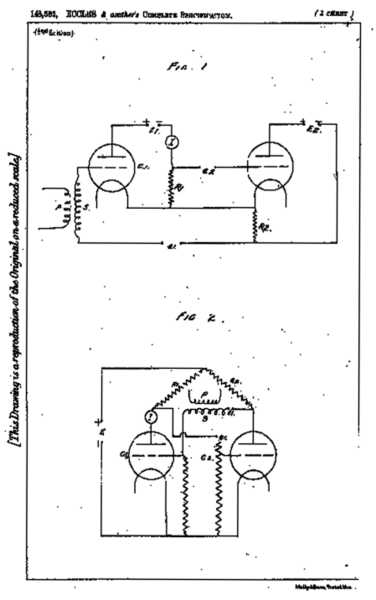
How Memory Works
Written by Harry Fairhead
From i-programmer.info.
In fact the problem had been more or less solved in 1919, before any of the great valve based computers were started. Two UK physicists, Eccles and Jordan, (Jordan was an electrician) invented a circuit which used two valves. Two trigger lines could be used to turn one of the valves on and the other off. A little more work and they invented a whole family of two-valve circuits which depended on the action of one valve switching the other valve off.
One of these circuits was the “bi-stable latch”. This had a single input line, which could be high or low, and a single “enable” or “latch” line. When the latch line was low the output of the bi-stable followed the input but when the latch line was high the output was fixed at its last value irrespective of the input.
You can think of this as the action of a memory – when the latch is high the bi-stable remembers the input applied to it. A simple circuit but the basis of most of the early high-speed computer memory. Later the same circuit was translated into transistors and then into integrated circuits.
The only problem with this arrangement is that two valves, or transistors, are required for every bit stored – at any given time one is on and the other off.
http://www.i-programmer.info/babbages-bag/359-memory-2.html

We are able to read above (See Logic gates and flip-flops in 1886) how the basis of this circuit can be traced back to 1898 and Nikola Tesla’s US Patent 613,809 “Method Of And Apparatus For Controlling Mechanism Of Moving Vessels Or Vehicles”. He used them for the first examples of remote radio control. Tesla’s patent idea can be traced back to the ideas of William Stanley Jevons and his ‘logical piano’. (See above)
So many people have claimed to be the inventor of this idea that it is impossible to trace them all.
Data Recording
HDD Hard Disk Drive
The development of the computer as we know it, would not have been possible without the hard disk drive (HDD). Searching the web, we find superficially, that its invention is credited to IBM and Reynold B. Johnson in the 1950’s. 56 Wiki: “IBM manufactured magnetic disk storage devices from 1956 to 2003, when it merged its hard disk drive business with Hitachi’s. Both the hard disk drive (HDD) and floppy disk drive (FDD) were invented by IBM and as such IBM’s employees were responsible for many of the innovations in these products and their technologies. The basic mechanical arrangement of hard disk drives has not changed since the IBM 1301. Disk drive performance and characteristics are measured by the same standards now as they were in the 1950s. Few products in history have enjoyed such spectacular declines in cost and size along with corresponding improvements in capacity and performance.” 57
Reynold Johnson
Wiki: “The IBM 350 Disk File, invented by Reynold Johnson, was introduced in 1956 with the IBM 305 RAMAC computer.”… 58 although the ideas and the patents for magnetic recording appeared some fifty years earlier.
Wiki: “Reynold B. Johnson (1906 – 1998 was an American inventor and computer pioneer. A long-time employee of IBM, Johnson is said to be the “father” of the disk drive. Other inventions include automatic test scoring equipment and the videocassette tape. Johnson graduated from Minnehaha Academy (1925) and went on to graduate from the University of Minnesota (BS in Educational Administration, 1929).” 59
Magnetic disk recording goes back way before Johnson and although it was something of a novelty, it has been around for as long as any other method of recording. The development of existing technology by Johnson is not invention, it is development, and we can also rule-out the inventions of both the disk drive and the video-cassette tape as they had already been invented.
It has always seemed fair that the announcement of an invention should also be accompanied by credit given to the person or persons who thought of the original idea. However, modern history seems to give credit only to ideas by academics or in this case academic researchers working for large international companies. Some of the ideas recorded here are accredited to those who had nothing to do with the original idea. This manipulation of history is seemingly endless. See the transistor “invention” in another of my blogs at this website.
livingstonmontana.com: “While on loan to Sony, (Reynold B.) Johnson developed the process to store video on half the width of normal video tape. It is now known as VCR.” 60 It seems that he reduced the width of the existing videotape by half and can only claim the cassette as his own idea…or can he?
History
Oberlin Smith 1888 oberlinsmith.org: “Thomas Edison demonstrated his newly invented phonograph machine to Oberlin Smith when Smith visited Edison in his Menlo Park laboratory in 1878. As a lover of music, Smith purchased an Edison phonograph, but soon found the audio quality of it to be “too scratchy” and he questioned the expense and precision of its mechanical parts. After nearly ten years of tinkering, Smith published the idea of storing a recording on a magnetic wire in the English journal Electrical World, and became the father of all magnetic recording devices.” 61
Magnetic recording appears to have had its intellectual début in the workshop of Oberlin Smith of Cincinnati, Ohio, a mechanical engineer. (Note, again we see a major innovation that dates back to before the 1930’s and no scientist involved) He published an original work suggesting magnetic recording in 1888. The article appeared in a British magazine where he suggested the use of permanent magnetic impressions for recording sound. His ideas were apparently taken seriously by Valdemar Poulsen, a Danish engineer.
Valdemar Poulsen: He developed a magnetic wire recorder, the ‘Telegraphone’ that received a patent in 1898. He invented devices that recorded on tape, and disks and so we see that recordable magnetic disks were 50 years old when the first recordable magnetic disks were ‘invented’ in the 1950’s by IBM scientists. What they did was to change the format from analogue to digital, digital being easier to record. The digital format being the invention of Alec Harley Reeves in 1938. Note the 1930’s watershed yet again. 62
Wiki: “Valdemar Poulsen (23 November 1869 – 23 July 1942) was a Danish engineer who developed a magnetic wire recorder in 1899.” 63
h2g2.com: Poulsen recorded the voice of Emperor Franz Joseph, which is still preserved today. It is the oldest existing magnetic recording. 64
Curt Stille and a Cassette in 1925
oktopus.hu: 1925 – “Stille and another German, Karl Bauer (a licensee of the Stille wire recorder patents), marketed an improved wire recorder telephone answering/dictation machine called the Dailygraph (In 1925). The machine was manufactured by the Vox company, also of Germany. Later versions of the Dailygraph include provisions for a cartridge, apparently the first use of a cartridge-loaded (cassette) medium.” 65
The cassette, as we recall, was re-invented by Reynold B. Johnson in the 1960’s.
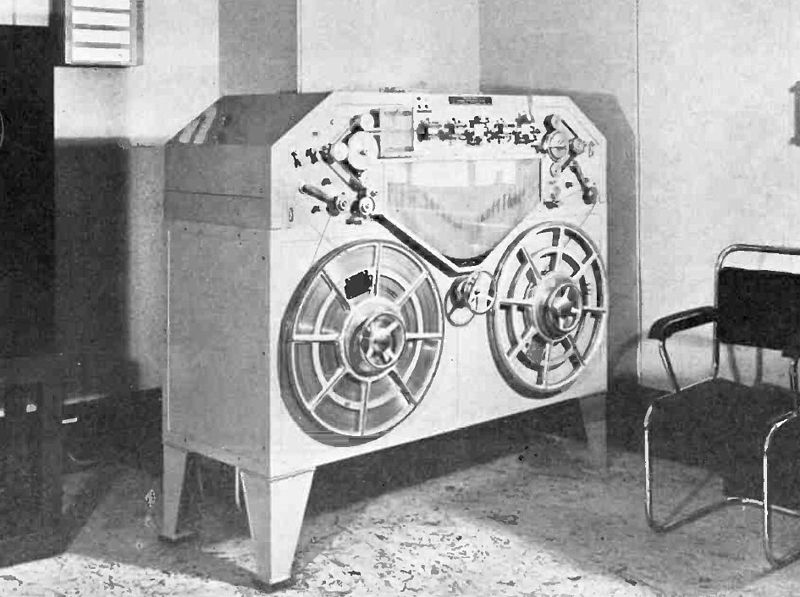
openlearn.open.ac.uk: “The development of an electronic amplifier using the thermionic valve (vacuum tube) enabled the tiny magnetic fluctuations in the steel wire to be magnified to a usable level. By 1924 a German engineer, Dr Curt Stille, had developed a machine that could record sounds on a steel tape. The BBC (British Broadcasting Company) showed great interest for (it), at this time, they used disc recorders for pre-recording programs and talks that were cut into acetate discs, replayed maybe twice and then discarded. So they sent two engineers to Berlin for a demonstration. They offered to buy the machine but were refused and so returned empty-handed. In 1931 Louis Blattner purchased a Stille machine, shipped it to England and renamed it the Blattnerphone, illustrated in Figure 20. It used 2-inch (50-mm) wide flat steel tape and could record for up to 20 minutes.” 66
S. J. Begun
No link for this one: 1939-45 – At the (Charles) Brush Development Company, S. J. Begun develops steel tape and coated-paper tape recorders. Between 1942 and 1945 the company designs and successfully sells to the military various types of recorders utilizing plated media in the form of tapes, disks, and wire. Google Patents: SJ BEGUN – US Patent 2,535,480, 1950 67
(Fritz) “Pfleumer used very thin paper which he coated with iron oxide powder using lacquer as glue. He received a patent in 1928.” 68
Wiki: “Fritz Pfleumer (20 March 1881 in Salzburg – 29 August 1945 in Radebeul) was a German-Austrian engineer who invented magnetic tape for recording sound.” 69
1932 “AEG, a large German electrical manufacturer, purchases the patent rights of the independent inventor Fritz Pfleumer, who after 1928 patented a system for recording on paper coated with a magnetisable, powdered steel layer. AEG sets about designing a tape recorder, while it collaborates with the German chemical firm I. G. Farben to develop a suitable tape. I. G. Farben experiments with tape coated with carbonyl iron powder, made under a proprietary process.”
http://mysite.verizon.net/cbladey/soundmus/wollensaktr.html
1943 Wiki: “German engineers had developed a high-quality form of magnetic tape sound recording that was unknown elsewhere. The Nazi radio networks used it to broadcast music and propaganda around the clock.
The Magnetophon
On his way back home to San Francisco, Mullin made a chance stopover at a nearby German radio station at Bad Nauheim, which was already in American hands. Here he was given two suitcase-sized AEG ‘Magnetophon’ high-fidelity recorders and 50 reels of Farben recording tape. Mullin had them shipped home and over the next two years he worked on the machines constantly, modifying them and improving their performance. His main hope was to interest the Hollywood movie studios in using magnetic tape for movie sound recording.
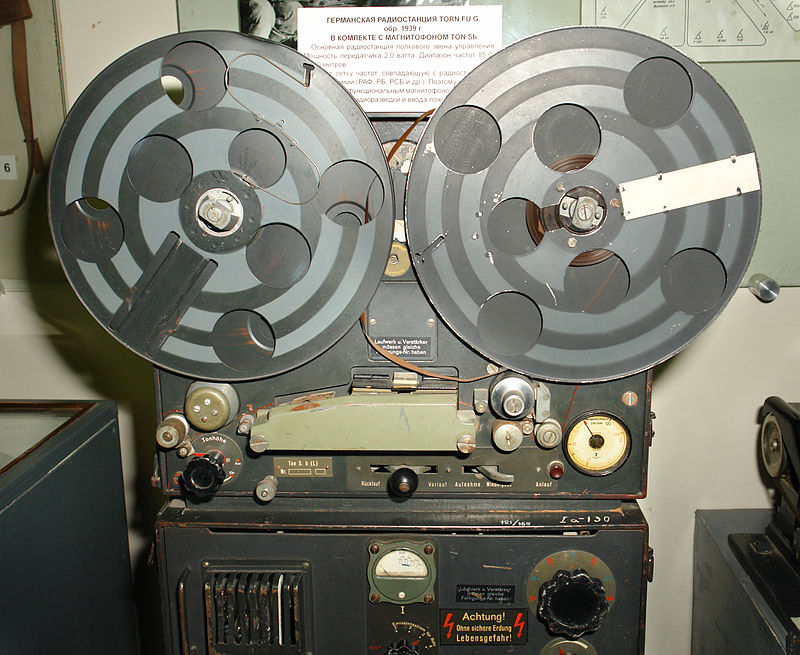
Mullin gave two public demonstrations of his machines in Hollywood in 1947, in which he first presented live music performed behind a curtain, followed by a concealed playback of the performance. Mullen’s recorder caused a sensation among American audio professionals and many listeners could not tell the difference between the recorded and live performances. By luck, Mullin’s second demonstration was at MGM Studios in Hollywood and in the audience that day was Bing Crosby’s technical director, Murdo Mackenzie. Mackenzie arranged for Mullin to meet Crosby, and in June 1947 Crosby was given a demonstration of Mullin’s magnetic tape recorders.” 70
1945 mysite.verizon.net: “Former serviceman John T. Mullin demonstrates a captured Magnetophon to the Institute of Radio Engineers. Performer Bing Crosby works with Mullin to use the Magnetophon for radio broadcasts on ABC” 71 Wiki tells us that: John T. “Jack” Mullin (1913–1999) was an American pioneer in the field of magnetic tape sound recording and made significant contributions to many other related fields. From his days at Santa Clara University to his death, he displayed a deep appreciation for classical music and an aptitude for electronics and engineering.
1945 mysite.verizon.net: “American and British technical investigators “discover” the Magnetophon in Luxembourg, France, and other places formerly occupied by the Germans. By Spring, these investigators begin gathering information about the production of tape recorders and tape, and the U.S. Department of Commerce publishes the information. The U.S. Alien Property Custodian seizes German patent rights on the technology.” 72 How many reputations were crafted from Nazi technology?
1950’s Magnetic disk technology ran alongside that of tape, the only difficulty being that of tracking. But this also seems to have been overcome because, during the fifties, magnetic disk recorders were being manufactured for sale to the public. The Timex Magnetic Disc Recorder and the Pye ‘Record Maker’ are just two examples to illustrate that the idea behind the hard disk drive is not new. The Timex Thermionic Products ‘Recordon’ used a 9″ dia oxide coated paper disk and was on sale from 1954 to 1957. 73

It was to be the tape recorder that grabbed the public imagination and became popular with the recordists, due to, I would guess, the longer playing time. The magnetic disk became the forerunner of the floppy disk and the HDD.
Optical Recording
CD’s and DVD’s are a development of already existing much earlier optical recording systems where an analogue sound track was recorded onto a motion picture film. Digital recordings can be made on the same medium as analogue recordings:
Sound on Film
 amps.net: “The first attempts to record sound to an optical medium occurred around 1900. In 1906 Eugene Lauste applied for a patent to record sound on film. He and Dickson worked on the moving picture idea that Edison wanted to go with the phonograph. The result of their work, which Edison took the credit for, was the famous Kinetoscope. In 1905 he built a complete experimental apparatus for recording and reproducing pictures and sound simultaneously on the same film, a British patent No 18057 was granted in August 1907.” 74
amps.net: “The first attempts to record sound to an optical medium occurred around 1900. In 1906 Eugene Lauste applied for a patent to record sound on film. He and Dickson worked on the moving picture idea that Edison wanted to go with the phonograph. The result of their work, which Edison took the credit for, was the famous Kinetoscope. In 1905 he built a complete experimental apparatus for recording and reproducing pictures and sound simultaneously on the same film, a British patent No 18057 was granted in August 1907.” 74
en.wiki: In 1923 Lee de Forest applied for a patent to record to film; he also made a number of short experimental films, mostly of vaudeville performers. 75
No theory technology
Eric Tigerstedt, Wiki: “Eric Magnus Campbell Tigerstedt (August 4, 1887 – April 20, 1925) was one of the most significant inventors in Finland at the beginning of the 20th century, and has been called the “Thomas Edison of Finland”. He was the first person to implement a working sound-on-film technology,” 76 “After many disappointments, Tigerstedt finally succeeded in substantially improving on the design of Lee De Forest, and he achieved an amplification effect many times that of the original vacuum tubes. His achievement was purely experimental, as there were no prior experience or mathematical models that he could have followed. This was a major step forward for Tigerstedt, and he was soon able to show a film with sound which was electrically amplified and broadcast through a speaker system. He had finally solved the most difficult practical problem of talking movies. Beginning in 1919, DeForest created his own sound-on-film system, which he called Phonofilm, and which may have used some of Tigerstedt’s concepts.” 77
1926 Wiki: “Vitaphone, the first long playing records at 33 1/3 RPM were in use from 1926. Using a synchronised disk, the system was quickly supplanted by technologies which recorded a sound track optically directly onto the side of the strip of motion picture film. This was the dominant technology from the 1930s through the 1960s and was still in use as of 2004.” 78
Laser Recording
At this point, I was about to say that there are exceptions to all rules and admit that the laser, something also integral to computer data recording, came about as a result of the theoretical work of Albert Einstein. However, reading various versions of the history of his Nobel prize the jury is still out until I find some information that gives clear answers on the subject. It seems that no two writers agree as to exactly what he received the prize for, and this indecision apparently also applies to the Nobel committee who made the award after a year of deliberation.
Wiki: “Albert Einstein received his Nobel Prize one year later, in 1922. During the selection process in 1921, the Nobel Committee for Physics decided that none of the years nominations met the criteria as outlined in the will of Alfred Nobel. According to the Nobel Foundation’s statutes, the Nobel Prize can in such a case be reserved until the following year, and this statute was then applied. Albert Einstein therefore received his Nobel Prize for 1921 one year later, in 1922.” 79
Even Wiki gets it wrong. “In 1921, Einstein was awarded the Nobel Prize in Physics. Because relativity was still considered somewhat controversial, it was officially bestowed for his explanation of the photoelectric effect. He also received the Copley Medal from the Royal Society in 1925.” 80
All very confusing, relatively speaking.
nobelprize.org: “As is well known Einstein did not get the Nobel Prize for his relativity theories due to strong disbeliefs in those theories among some influential members of the Royal Swedish Academy of Sciences. The 1911 Nobel Laureate in Physiology or Medicine Allvar Gullstrand was of the opinion that the correctness of Einstein’s special relativity theory rested on belief – not proven facts, (as it still does to this day) and the general relativity theory could in his opinion not stand a critical analysis…
…The Nobel Committee avoids committing itself to the particle concept. Light-quanta or with modern terminology, photons, were explicitly mentioned in the reports on which the prize decision rested only in connection with emission and absorption processes. The Committee says that the most important application of Einstein’s photoelectric law and also its most convincing confirmation has come from the use Bohr made of it in his theory of atoms, which explains a vast amount of spectroscopic data…
…Bohr, however, resisted the concept of photons for many years, until about 1925. In his 1922 Nobel lecture Bohr expressed his opposition in the following words: “In spite of its heuristic value the hypothesis of light quanta, which is quite irreconcilable with the so-called interference phenomena, is not able to throw light on the nature of radiation.” Einstein was invited to receive his prize at the same event, but could not come, because of his journey to Japan. Thus the world missed the opportunity to witness an early discussion between these two giants of physics about the nature of light.
The connection between Einstein and Bohr, which the Nobel Committee for physics saw, was made manifest by the two Nobel Prizes decided in 1922: the reserved one from the earlier year to Einstein and the current one to Bohr.” 81 Albert Einstein is a megastar of physics, his reputation built on hype comparable to that of a Hollywood movie star. We will probably never know the facts behind this award, but you never know!
Ted Maiman
Wiki: “Theodore Harold “Ted” Maiman (1927 – 2007) was an American physicist (Maiman was an engineer) who made the first laser (Light Amplification by Stimulated Emission of Radiation).[1] Maiman received many awards and honors for his work, and was the author of a book titled The Laser Odyssey, which describes the events surrounding the creation of the first laser.” 82
CD, DVD, Laser Disk, Video Disk Dr. David Paul Gregg, according to Wiki, is credited with invention of the optical disk (CD, DVD, Laser Disk) in 1958. However, there do seem to be a string of complaints about the contents of the Wiki article on this subject. The author of these pages has no idea why there should be so much confusion about a relatively modern technology?
Here is an example – WikiTalk: “I have a problem with the intro to this section: The Compact Disc is not an invention: it is the convergence of a series of enabling technologies, such as laser technology, mechanics, electronics, and coding technology. Therefore, nobody can claim that he or she is the inventor of the Compact Disc…Is it just a digital version of the Videodisc developed in the 60s and 70s? ” 83
…and recording in digital is no different from recording in analogue. The discussion continues with a somewhat (by now) lame argument that we have come across before in these pages: WikiTalk again: “The same sort of argument could be made for just about any invention. Take the automobile – we couldn’t have cars if someone hadn’t invented the wheel, wagons, metalurgy, internal combustion engines, etc. And of course we never would have CDs if nobody had invented lasers, transistors, computers, digital audio formats, etc. But just because an invention builds on previous inventions doesn’t mean that it’s any less an invention in its own right. Credit for the invention should be given to Philips and Sony and their “joint taskforce of engineers.”” 84 But it’s not.
This argument is based on the assumption that some of the examples given: “lasers, transistors, computers, digital audio formats, etc.” are automatically assumed to be the work of academics. The Compact Disc “invention” is attributed to an academic who is deserving of the accolade if the circular reasoning is accepted. The “engineering task-force” is assumed to be working on the instructions of the academic. The insecurity of the scientific community is such that it deems it necessary to lay-claim to every new technology even when the patent claimant is making pots of money from the idea.
It may be useful at this point to look back and to consider just what contribution has been made by academics. They have in some instances, taken part in the development of some of the mentioned technologies. But development is engineering and not science and so with the exception of laser theory, which itself seems to have a somewhat dubious provenance, we have as yet found no supporting academic science on which to base these inventions in the history of computer technology.
Wiki says: “Dr. David Paul Gregg was the inventor of the optical disc (disk). Gregg was inspired to create the optical disc in 1958 while working at Californian electronics company, Westrex. He (His) first patent for a “Videodisk” was filed in March 1962 (USPO 3350503) where he looks to advance electron beam recording and reproducing. Gregg went to work at 3M’s Mincom division with experienced television videotape engineers Wayne Johnson and Dean De Moss. The three men subsequently filed patents to cover a disc recording system, a way to duplicate discs, and reproducing TV signals from photographic discs. When Mincom contracted Stanford’s SRI to further the research, Gregg left and formed his own company Gauss Electrophysics.” 85
Videodisc History Time-line
Mostly from Wiki:
1898 “E & H T Anthony, a camera maker based in New York, marketed in 1898 a combination motion picture camera and projector called “The Spiral” that could capture 200 images arranged in a spiral on an 8 inch diameter glass plate, which when played back at 16 frames per second would give a running time of 13 seconds.
Theodore Brown patented (UK patent GB190714493) a photographic disk system in 1907 recording approximately 1,200 images in a spiral of pictures on a 10 inch disk. Played back at 16 frames per second, the disk could provide around one and a quarter minutes of material. The system was marketed as the Urban Spirograph by Charles Urban, and disks were produced – but it soon disappeared.
1930s John Logie Baird, created the Phonovision system in the early 1930s, which mechanically produced about four frames per second. The system was not successful.” 86 But someone did get it to work:

1941 in 1907
cedmagic.com: “Video jukebox from 1941 that played a stack of VideoDiscs and was the television equivalent of a Wurlitzer Jukebox. The image was seen through the aperture at the top, and the sound recorded on the discs came out the large round speaker at the bottom. A stack of 10″ VideoDiscs can be seen at the left side of the large opening in the middle, with any one of the discs being selectable using the row of buttons underneath the opening. The grooved discs rotated at 100 RPM and provided about a minute of playback. This system appeared in the December 1941 issue of Popular Mechanics, so the advent of World War II halted any commercial implementation of the VideoDisc jukebox. Manufacture of televisions was also halted during the war.” 87
1950’s
P.M.G Toulon, a French inventor working at Westinghouse Electric during the 1950s and 1960s patented a system in 1952 (US Patent 3198880) which used a slow spinning disc with a spiral track of photographically 1.5 millimeter wide recorded frames, along with a flying spot scanner, which swept over them to produce a video image. This was intended to be synchronously combined with playback from a vinyl record. It appears a working system was never produced. It has similarities with the tape based Electronic Video Recording system, which was released for professional use.88
Laser Turntable
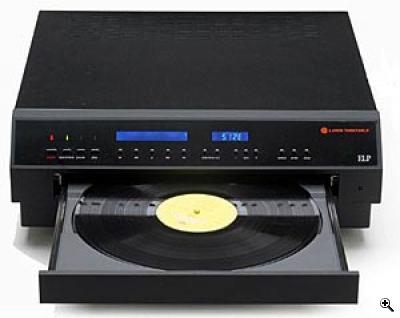
Wiki: William K. Heine presented a paper entitled A Laser Scanning Phonograph Record Player to the 57th Audio Engineering Society (AES) convention in May 1977. The paper details a method developed by Heine that employs a single 2.2 mW Helium–neon laser for both tracking a record groove and reproducing the stereo audio of a phonograph in real time. In development since 1972, the working prototype was named the “LASERPHONE” and the methods it used for playback was awarded U.S. Patent 3,992,593 on 16 November 1976.[1] Heine concluded in his paper that he hoped his work would increase interest in using lasers for phonographic playback. https://en.wikipedia.org/wiki/Laser_turntable
Digital Transmissions and Recording
Wiki and connected-earth.com:
“Engineer, Alec Harley Reeves, (1902 – 1971) recognised the potential of pulse-code modulation (What are now called digital transmissions or recordings) for reducing noise when speech is transmitted over long distances. He patented the invention in 1938, (that 1930’s deadline again) but it was impractical at the time due to the need for the complex circuits needed with valve/vacuum tube technology. It only became feasible in the 1950’s with the introduction of the transistor. He was also involved in the invention of optical fibres.”. 89
Reeves was a pioneer of semiconductor devices and among the first to exploit the possibility of using light to carry information. When ‘waveguides’ – pipes carrying high frequency signals – failed to work, Reeves thought of glass fibres. In the late 1960’s, he inspired and led the team under Charles Kao and George Hockham (See below) that created the world’s first practical optical fibre system.”
Open-minded, he experimented with the paranormal and believed he was in regular contact with the 19th century inventor of DC electrical generation, Michael Faraday. (It’s not unusual to find a spiritual element in the lives of those who have pioneering ideas, but this is not considered to be sound scientific methodology. LoL) 90
There is very little scope for inventors these days and almost no forums where they can exchange ideas. New ideas are frowned upon and inventors are often accused of pseudo-science by sceptics and sceptical scientists who often never have an original idea in their lives.
Inkjet and other Printers
Lord Kelvin Inkjet 1867
Wiki: The continuous inkjet (CIJ) method is used commercially for marking and coding of products and packages. The idea was first patented in 1867 by Lord Kelvin, and the first commercial devices (medical strip chart recorders) were introduced in 1951 by Siemens. 91 elsa.berkeley.edu: For all its originality, the idea behind the inkjet is far from new. As long ago as 1867, William Thomson (later known as Lord Kelvin) was granted a patent for “Receiving or Recording Instruments for Electrical Telegraphers” which used electrostatic forces to control the release of ink drops on to paper. 92 As it turns out, the Syphon Recorder was not a success, despite being the first device to use an electrostatic charge to print a code. It was a pen recorder with an electrostatically controlled ink flow that drew a wiggly line on a role of tape – not a printer. But reverse engineering the name of a famous scientists onto a page at Wiki is what its editors do best.
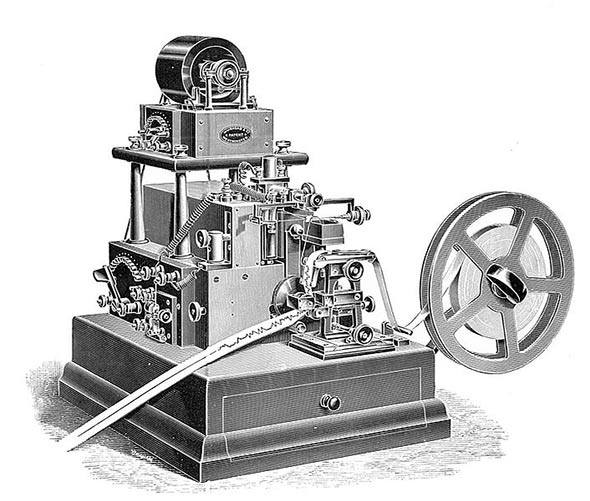
Xerox 1937
inventors.about.com: In 1937, the process called Xerography was invented by American law student Chester Carlson. Carlson had invented a copying process based on electrostatic energy. Xerography became commercially available in 1950 by the Xerox Corporation. Xerography comes from the Greek for “dry writing”.93
Rune Elmqvist Elmqvist 1948
Wiki: “Rune Elmqvist Elmqvist initially worked as a medical doctor (having trained in Lund), but later worked as an engineer and inventor.
In 1948, he developed the first inkjet ECG printer which he called the mingograph while working at Elema-Schnander, a company which later became Siemens-Elema. In 1957 he received an honorary doctorate.” 94 Well he would, it’s very flattering.
Daisy Wheel 1972
Wiki: In 1972 a team at Diablo Systems led by engineer David S. Lee developed the first commercially successful daisy wheel printer, a device that was faster and more flexible than IBM’s golf-ball devices, being capable of 30 cps (characters per second), whereas IBM’s Selectric operated at 13.4 cps. 95
I personally, see no justification in any of the above that would lead anyone to attribute the development of the computer to academic science, the scientific method, or an education in physics. Most of the names that appear above were not qualified scientists or physicists in the accepted understanding of the word. If the requirement for an inventive mind depends on a scientific education then most of the names above would be those of scientists and they clearly are not.
It’s not possible to educate someone to be inventive or innovative, this depends on individual imagination, something discouraged by science unless accompanied by scientific qualification. This in turn seems to discourage independent critical thinking outside of the scientific box and so nothing new to science is discovered and scientists don’t usually invent.
References computer history
1 http://en.wikipedia.org/wiki/Automaton
2 http://www.mlahanas.de/Greeks/HeronAlexandria2.htm
http://goldenink.com/computersandnetworks.shtml
3 http://en.wikipedia.org/wiki/Ban%C5%AB_M%C5%ABs%C4%81
4 http://en.wikipedia.org/wiki/Ban%C5%AB_M%C5%ABs%C4%81#Automata
5 http://en.wikipedia.org/wiki/Al-Jazari
6 http://www.gap-system.org/~history/Biographies/Boole.html
7 http://georgeboole.net/ …Broken link
8 http://en.wikipedia.org/wiki/George_Boole
9 http://www.gap-system.org/~history/Biographies/Boole.html
10 http://en.wikipedia.org/wiki/Charles_Babbage
11 http://en.wikipedia.org/wiki/Ada_Lovelace
12 http://www.well.com/~adatoole/bio.htm
13 http://en.wikipedia.org/wiki/Federico_Luigi,_Conte_Menabrea
14 http://en.wikipedia.org/wiki/Ada_Lovelace
http://www.fourmilab.ch/babbage/sketch.html
15 http://www.answersingenesis.org/articles/tj/v14/n1/females
16 http://en.wikipedia.org/wiki/Difference_engine
17 http://en.wikipedia.org/wiki/J._H._M%C3%BCller
18 http://en.wikipedia.org/wiki/Logic_gate
19 http://www.wordiq.com/definition/Logic_gate
20 A list of Tesla patents can be found at:
http://en.wikipedia.org/wiki/List_of_Tesla_patents
21 http://www.wordiq.com/definition/Logic_gate
22 http://oscience.info/computing-technology/logic-gates/
23 http://en.wikipedia.org/wiki/Coincidence_circuit#Bothe_and_Kohlh.C3.B6rster.2C_1929
24 http://www.mpg.de/957380/person3
25 http://www.andrewaser.ch/Publications/NikolaTeslasRadiationsAndCosmicRays.pdf
26 http://www.nuenergy.org/alt/tesla_energy.htm
27 http://en.wikipedia.org/wiki/Coincidence_circuit#Bothe.2C_1924
28 http://en.wikipedia.org/wiki/Bruno_Rossi
29 http://en.wikipedia.org/wiki/William_Eccles
38 http://www.suite101.com/content/colossus-computer-and-alanturing-a65966
http://www.turing.org.uk/turing/scrapbook/computer.html
http://en.wikipedia.org/wiki/John_von_Neumann
39 http://en.wikipedia.org/wiki/Alan_Turing#Early_computers_and_the_Turing_test
40 http://wiki.answers.com/Q/When_was_the_first_electronic_computer_invented
41 http://highfields-arc.6te.net/geninfo/pchist/tflowers.htm
42 http://www.turing.org.uk/turing/scrapbook/computer.html
43 http://en.wikipedia.org/wiki/Atanasoff%E2%80%93Berry_Computer
44 http://en.wikipedia.org/wiki/ENIAC
45 http://www.electroline.com.au/articles/958-Tracking-the-story-ofthe-PCB-part-one
46 http://www.mpoweruk.com/history.htm
47 http://en.wikipedia.org/wiki/Printed_circuit_board#History
http://en.wikipedia.org/wiki/Paul_Eisler
48 http://en.wikipedia.org/wiki/Jack_Kilby
49 http://en.wikipedia.org/wiki/Central_processing_unit
50 http://en.wikipedia.org/wiki/Integrated_circuit#Invention
51 http://en.wikipedia.org/wiki/Talk%3AIntegrated_circuit
52 http://en.wikipedia.org/wiki/Integrated_circuit#Invention
53 http://en.wikipedia.org/wiki/Geoffrey_Dummer
54http://inventors.about.com/od/istartinventions/a/intergrated_circuit.htm http://www.thenakedscientists.com/HTML/content/interviews/interview/1120/
See also:
http://integratedcircuithelp.com/invention.htm
55 http://en.wikipedia.org/wiki/Bob_Widlar
56 http://en.wikipedia.org/wiki/Early_IBM_disk_storage
57http://en.wikipedia.org/wiki/Early_IBM_disk_storage#Early_IBM_HDDs
58 http://en.wikipedia.org/wiki/History_of_hard_disk_drives
59 http://en.wikipedia.org/wiki/Reynold_B._Johnson
60 http://www.livingstonmontana.com/access/dan/113reynoldjohnsoninventor.html
61 http://www.oberlinsmith.org/
62 http://en.wikipedia.org/wiki/Oberlin_Smith
63 http://en.wikipedia.org/wiki/Valdemar_Poulsen
64 http://h2g2.com/approved_entry/A3224936
65 http://www.oktopus.hu/imgs/MANAGED/Ajanlott_irodalom/Hangtechnika/angol/A_Chronology_of_Magnetic_Recording.pdf
66 http://openlearn.open.ac.uk/mod/oucontent/view.php?id=397885§ion=1.3.2
67http://www.google.co.uk/patentshl=en&lr=&vid=USPAT2535480&id=HNNaAAAAEBAJ&oi=fnd&dq=S.+J.+Begun+magnetic+recording&printsec=abstract#v=onepage&q=S.%20J.%20Begun%20magnetic%20recording&f=false
68 http://en.wikipedia.org/wiki/Fritz_Pfleumer
http://en.wikipedia.org/wiki/Oberlin_Smith
http://en.wikipedia.org/wiki/Valdemar_Poulsen
69 http://en.wikipedia.org/wiki/Fritz_Pfleumer
70 http://en.wikipedia.org/wiki/Jack_Mullin
71 http://mysite.verizon.net/cbladey/soundmus/wollensaktr.html
72 http://mysite.verizon.net/cbladey/soundmus/wollensaktr.html
73 http://ftldesign.com/Timex/index.htm
http://www.radiomuseum.org/r/brush_mail_a_voice_bk_501bk50.html
74 http://www.amps.net/newsletters/issue22/22_lauste.htm
75 http://en.wikipedia.org/wiki/Lee_De_Forest
76 http://en.wikipedia.org/wiki/Eric_Tigerstedt
77 http://en.wikipedia.org/wiki/Eric_Tigerstedt
78
http://en.wikipedia.org/wiki/History_of_sound_recording#Recording_on_film
79 http://nobelprize.org/nobel_prizes/physics/laureates/1921/
80 http://en.wikipedia.org/wiki/Albert_Einstein
81 http://nobelprize.org/nobel_prizes/physics/articles/ekspong/
82 http://en.wikipedia.org/wiki/Theodore_Maiman
http://laserinventor.com/bio.html
83 http://en.wikipedia.org/wiki/Talk%3ACompact_Disc%2FArchive_1#History
84 http://en.wikipedia.org/wiki/Talk%3ACompact_Disc%2FArchive_1#History
85 http://en.wikipedia.org/wiki/David_Paul_Gregg
86 http://en.wikipedia.org/wiki/Optical_recording
87 http://www.cedmagic.com/history/videodisc-jukebox-1941.html
88 http://en.wikipedia.org/wiki/Videodisc
89 http://www.connectedearth.com/galleries/Pioneersandpersonalities/R/Reeves/index.htm
http://en.wikipedia.org/wiki/Alec_Reeves
90 http://www.privateline.com/TelephoneHistory2/reeves.html
91 http://en.wikipedia.org/wiki/Inkjet_printing
92 http://elsa.berkeley.edu/~bhhall/e124/e124inkjetprinter.html
93 http://inventors.about.com/od/xyzstartinventions/a/xerox.htm
94 http://en.wikipedia.org/wiki/Rune_Elmqvist
95 http://en.wikipedia.org/wiki/Daisy_wheel_printing#History
96
http://en.wikipedia.org/wiki/History_of_the_Internet#Three_terminals_and_an_ARPA
http://en.wikipedia.org/wiki/Fax#History
http://en.wikipedia.org/wiki/Teleprinter#History
http://www.siliconvalleyhistorical.org/home/the_emergence_of_the_internet